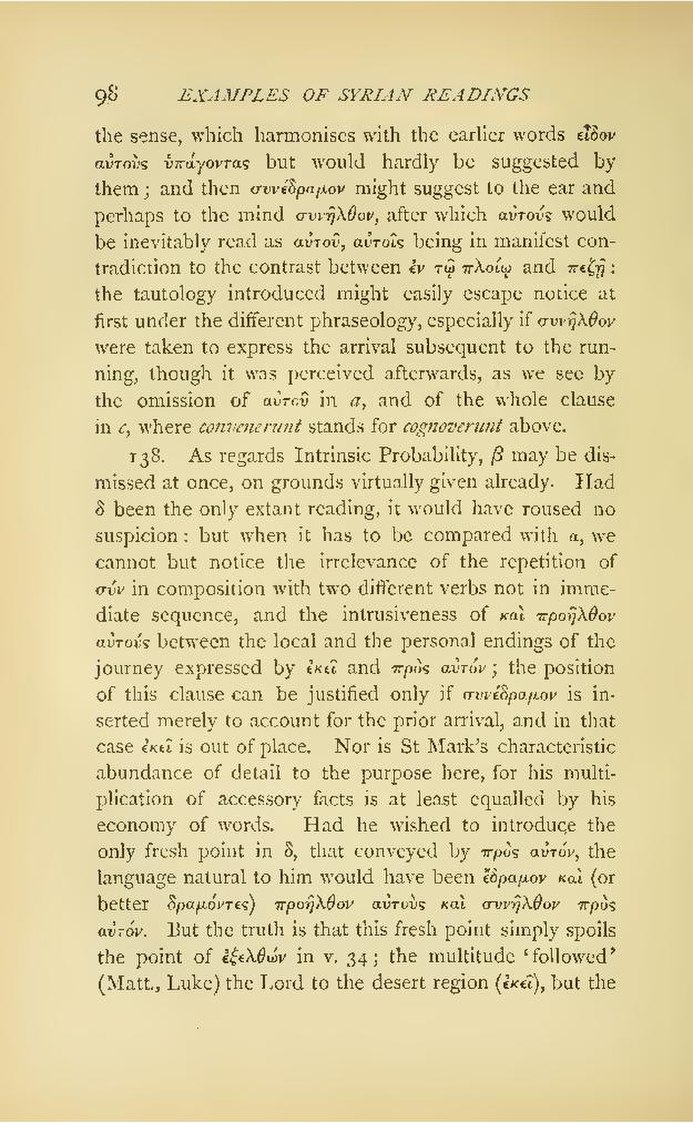the sense, which harmonises with the earlier words εἶδον αὐτοὺς ὑπάγοντας but would hardly be suggested by them; and then συνέδραμον might suggest to the ear and perhaps to the mind συνῆλθον, after which αὐτούς would be inevitably read as αὐτοῦ, αὐτοῖς being in manifest contradiction to the contrast between ἐν τῷ πλοίῳ and πεζῇ: the tautology introduced might easily escape notice at first under the different phraseology, especially if συνῆλθον were taken to express the arrival subsequent to the running, though it was perceived afterwards, as we see by the omission of αὐτοῦ in a, and of the whole clause in c, where convenerunt stands for cognoverunt above.
138. As regards Intrinsic Probability, β may be dismissed at once, on grounds virtually given already. Had δ been the only extant reading, it would have roused no suspicion: but when it has to be compared with α, we cannot but notice the irrelevance of the repetition of σύν in composition with two different verbs not in immediate sequence, and the intrusiveness of καὶ προῆλθον αὐτούς between the local and the personal endings of the journey expressed by ἐκεῖ and πρὸς αὐτόν; the position of this clause can be justified only if συνέδραμον is inserted merely to account for the prior arrival, and in that case ἐκεῖ is out of place. Nor is St Mark's characteristic abundance of detail to the purpose here, for his multiplication of accessory facts is at least equalled by his economy of words. Had he wished to introduce the only fresh point in δ, that conveyed by πρὸς αὐτόν, the language natural to him would have been ἔδραμον καὶ (or better δραμόντες) προῆλθον αὐτούς καὶ συνῆλθον πρὸς αὐτόν. But the truth is that this fresh point simply spoils the point of ἐξελθών in v. 34; the multitude 'followed' (Matt, Luke) the Lord to the desert region (ἐκεῖ), but the
